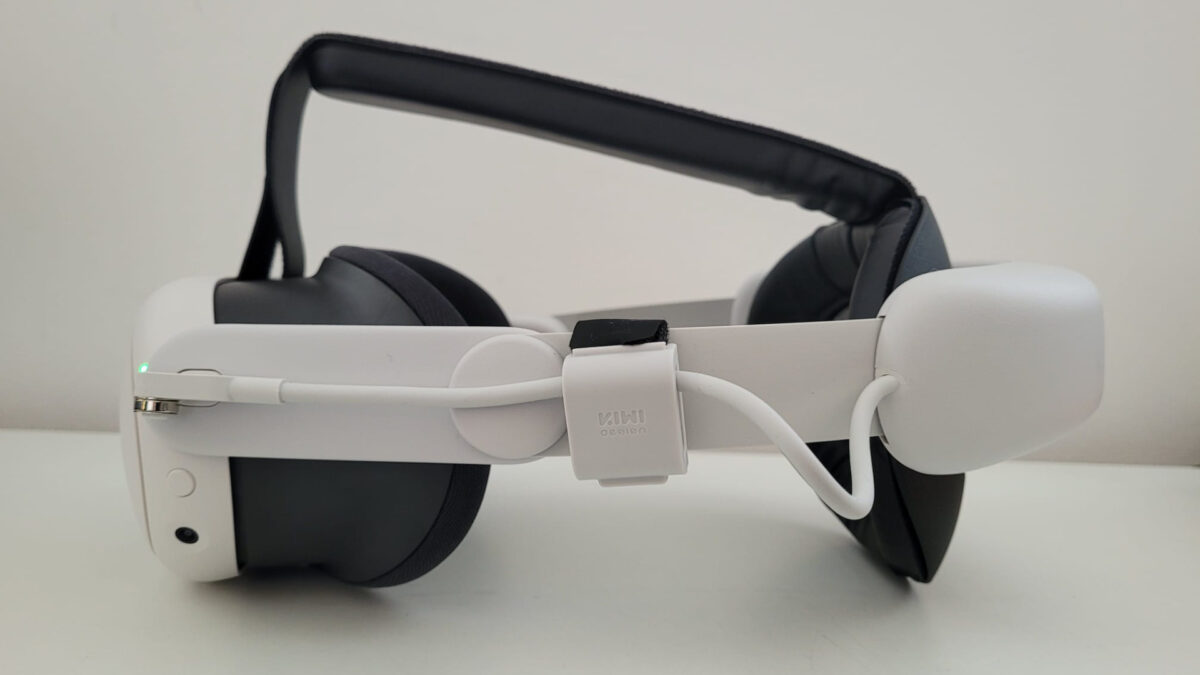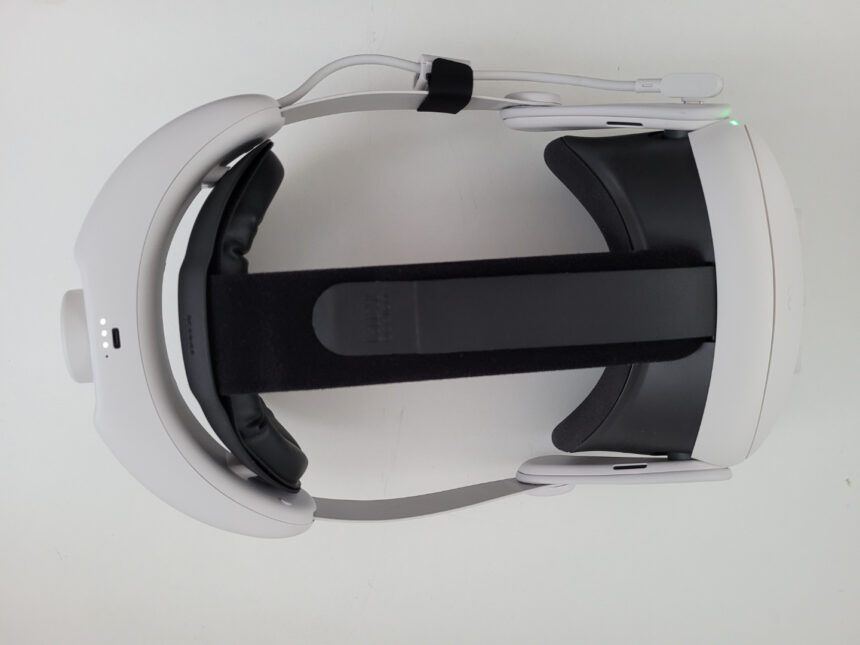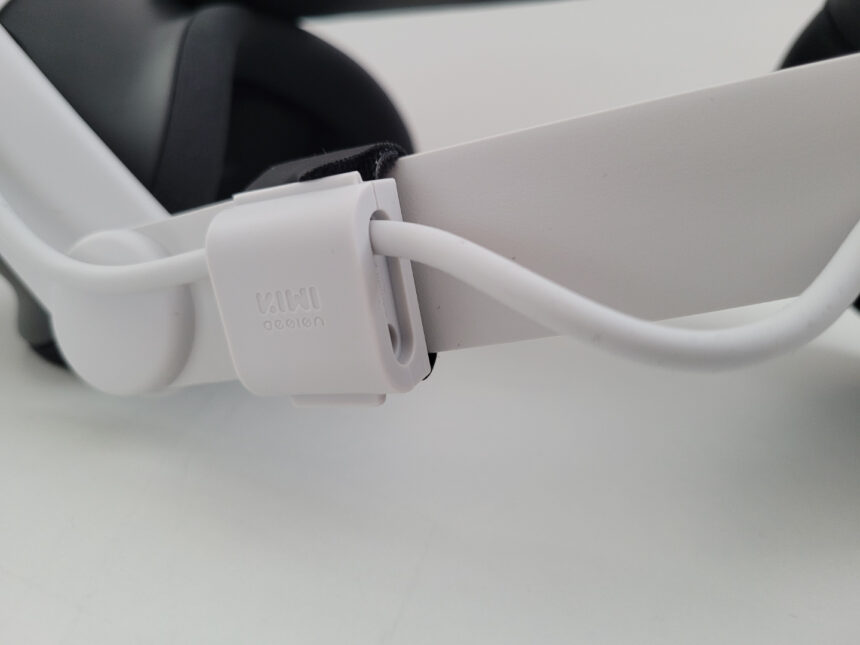Quest 3 accessory review: The Kiwi Comfort Battery Head Strap is a great alternative to Meta's Elite Strap

With the Comfort Battery Head Strap, Kiwi Design offers an inexpensive alternative to Metas Elite straps with battery. I have tested it for you.
The official Elite Strap from Meta with battery is an upgrade from the uncomfortable fabric head strap that comes standard with the Quest 3. The VR headset fits securely, and the workmanship is high quality. Nevertheless, there are some negative points, as Ben points out in our review. First and foremost, the technical problems (which have since been resolved) that caused the Quest 3 not to recognize the extra battery, and the high price.
Reason enough to look for suitable alternatives. One of them is the "Comfort Battery Head Strap SPC" by Kiwi Design. The Chinese accessory manufacturer has made a name for itself in recent years with numerous VR accessories, including for the Quest 2. Since the end of last year, Kiwi has also been producing products under the "Made for Meta" label as an official accessory partner.
I tested the Kiwi Comfort Battery Head Strap SPC for a week and write about my experiences.
Well padded thanks to memory foam
The Kiwi Comfort Battery Head Strap SPC is essentially the same as the official Meta head strap. An oval ring rests against the back of the head and is supported by a headband that runs lengthwise to the VR headset. This distributes the weight of the headset and the additional 6400 mAh battery behind the ring evenly across the head. Kiwi estimates the additional runtime at two to four hours, depending on use.

At the back of the head, Kiwi cushions the headstrap with comfortable memory foam. | Image: MIXED
Instead of using an elastic rubber ring like the Meta, Kiwi uses a plastic ring covered in memory foam. This fits snugly against the back of the head and is more comfortable than the Meta version, at least for my skull shape. The headband is also padded and relieves pressure on the top of the skull — a noticeable improvement over the Meta's simple fabric band. The synthetic leather cover makes the padding quick and easy to clean.
Design and battery
The size is adjusted with a wheel at the back of the head, which can be moved smoothly in both directions. According to Kiwi, this covers head sizes between 17.7 inches (approx. 45 cm) and 29.5 inches (approx. 75 cm). Above the wheel is the USB-C port for direct charging of the battery and four lights that indicate the charging status.
The back strap that holds the battery is slightly larger than the Elite Strap, but the weight of the extra material is not noticeable when worn. While the side straps on the Meta Strap are rigid, Kiwi adds a hinge to its model, allowing you to fold the VR headset up.

The included cable guide can be attached to the strap with Velcro. | Image: MIXED
Practical: Kiwi includes a cable guide for up to two cables, which is attached with Velcro. This allows you to run the battery cable and, if you are using the Quest 3 for PC VR, the link cable along the headband. The USB connector of the battery cable is slightly larger than on the Elite Strap because Kiwi added a magnetic holder.
This also explains the SPC in the name, which stands for Single-Point-Charging. If you also have Kiwi's Vertical Stand, you can simply attach the Quest 3 with the Battery Head Strap using a magnet and charge the headset and extra battery at the same time.
Kiwi's extra battery recharges the Quest 3 during use, albeit slowly. While I spent an hour in a VR fitness app, the headset's battery regenerated 8 percent. With the same duration and additional video recording, it was still two percentage points more. Overall, you can extend the Quest 3's battery life by at least two hours, a little more or less depending on your usage.
Fit and practicality
I used the Kiwi Headstrap for five days and played both motion intensive VR games like Synth Riders and Les Mills Bodycombat, as well as "simple" adventure games like Arcade Paradise VR. I also watched the VR movie On The Morning You Wake (to the End of the World) and various videos on YouTube VR with the Quest 3.
The Kiwi Headstrap worked very well during my daily one-hour VR fitness routines. Even at the "Expert" difficulty level with 360-degree movement in Synth Riders, the headstrap held up without slipping. I find the pressure relief provided by the additional padding on the top and back of my head to be extremely comfortable, especially during longer VR sessions.
Verdict: Kiwi's head strap is the better Elite Strap
Thanks to the memory foam padding, Kiwi's head strap is much more comfortable than the official Meta version. The added comfort alone justifies the purchase for me. There are also small but useful improvements, such as a hinge on the headband that allows the VR headset to be folded up quickly and easily, or the optional cable routing.
When it comes to battery life, both devices add an average of about two hours to the headset runtime. If that doesn't convince you, the Kiwi Headstrap costs only $60, which is less than half the price of the official Elite Strap from Meta.
Tip for savers: Of course, the Kiwi Headstrap is also available without an additional battery if the standard runtime of the Quest 3 is sufficient for you. This version costs around $30.
- You can find even more accessories for the Quest 3 in the linked article.
You can buy the Kiwi Comfort Battery Head Strap here
- Kiwi design Comfort Battery Head Strap for Quest 3 — on Amazon.com
- Kiwi design Comfort Head Strap for Quest 3 — on Amazon.com
Note: Links to online stores in articles can be so-called affiliate links. If you buy through this link, MIXED receives a commission from the provider. For you the price does not change.